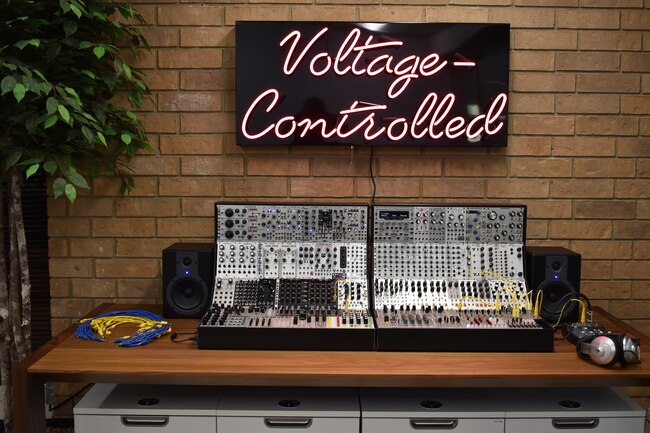How TRS MIDI Works
Many MIDI instruments, effects, and modules now support MIDI over smaller “minijack” connectors, but their implementations vary:
- Type A (now the MIDI standard)
- e.g.: Korg, Make Noise
- Type B
- e.g.: Arturia, Novation
- TS sometimes called Type C or Non-TRS
- e.g.: Expert Sleepers, Beatstep (Original), MFB
These are all different solutions to the same problem: how do you map the 3 pins used by a MIDI connector to the 3 connection points of a TRS minijack plug?
Clockwise from left, the 3 pins used are:
- Current Source (Vcc)
- Shield
- Current Sink (Data)
Why aren’t the pins arranged in numerical order clockwise? Well the DIN standard allows both 3 and 5 pin variations. A 3-pin DIN connector is numbered clockwise: 1, 2, and 3 are evenly-spaced across 180°. But the 5-pin DIN adds pins 4 and 5 between them.
How are those pins connected to a MIDI device?
via philrees.co.uk/midiplug.htm and six4pix.uk/split/manual.htmlThe signal on pin 4 is the current source, derived from a positive voltage in the driving MIDI output.
This signal is held at +5V by the sending device so is also called the “hot” connection.
The signal on pin 5 is the current sink, which is normally switched with the MIDI signal.
The sending device switches between connecting this to ground (so a current can flow) and holding it at +5V or disconnecting it (so no current can flow)
You may see the Current Source referred to as “Vcc” or sometimes “Voltage Reference Line”. You may see the Current Sink referred to as the “Data Line”.
TRS Connections
OK, now let’s talk about TRS plugs. The plugs used for TRS MIDI are usually “miniature” 3.5 mm (approx. ~⅛″) stereo phone connectors, which are sometimes called “minijacks”. They may also be be smaller “sub-miniature” 2.5 mm connectors.
- Tip (the pointy part)
- Ring (the part just before the pointy part)
- Sleeve (the part before that)
MIDI to Minijack Types
So, to send or receive MIDI over TRS or TS, you need to decide which MIDI pins to connect to which parts of the TRS or TS minijack cable. Here are the three most common solutions:
Type A (MIDI standard)
Korg, Make Noise
Buy:
MIDI 4 (Source) > TRS RING MIDI 2 (Shield) > TRS SLEEVE MIDI 5 (Sink) > TRS TIP
Used by manufacturers like Korg, Make Noise, Akai, and IK Multimedia (iRig MIDI 1). In 2018, it became the MIDI standard
The first known use of MIDI over TRS (the Line 6 MIDI Mobilizer in 2010) connected this way.
Type B
Arturia, Novation, 1010music
Buy:
MIDI 4 (Source) > TRS TIP MIDI 2 (Shield) > TRS SLEEVE MIDI 5 (Sink) > TRS RING
Used by manufacturers like Arturia (BeatStep Pro), Novation (Launchpad Pro), and 1010music.
TS (AKA Type C, Non-TRS)
Expert Sleepers, Beatstep (Original), MFB
Buy:
MIDI 4 (Source) > TS TIP MIDI 5 (Sink) > TS SLEEVE
Uses a mono minijack.
For reference see this Expert Sleepers post on Flickr.
